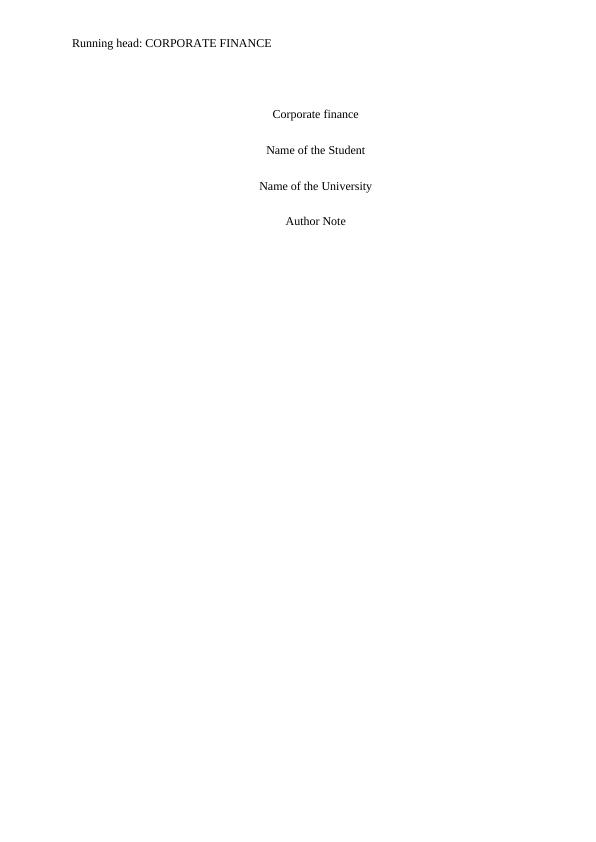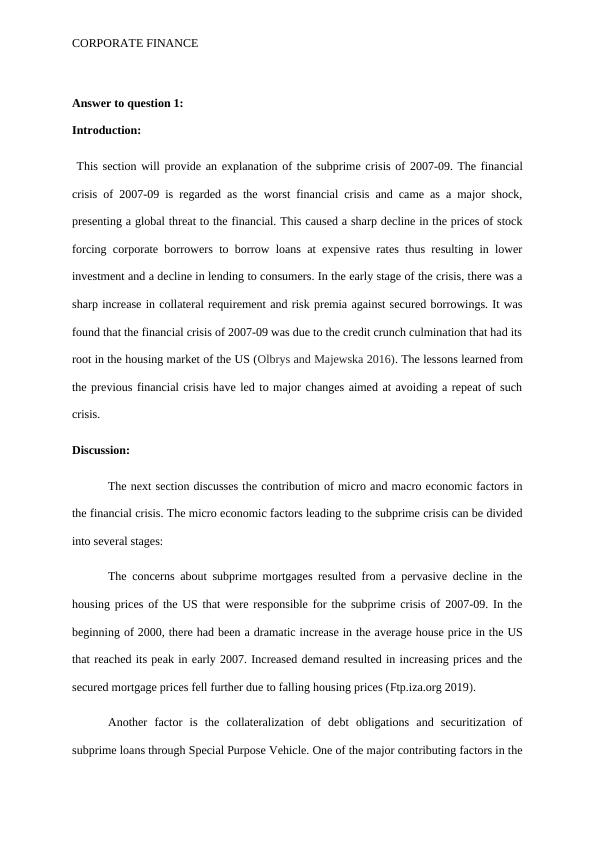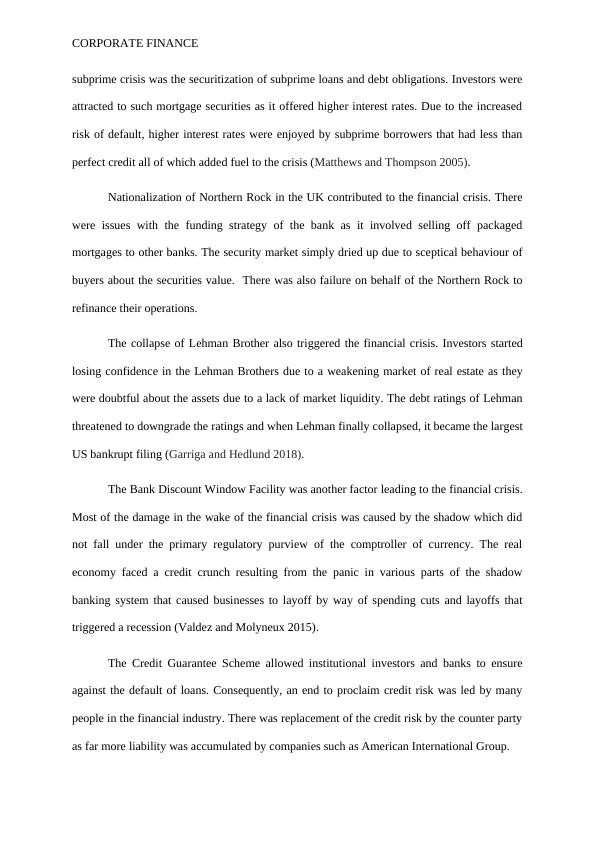Corporate Finance
Explain the nature of the sub-prime crisis of 2007-09, identifying the 'micro' and 'macro' causes and discuss the subsequent financial regulation reforms in the UK to prevent a repetition of such a crisis.
11 Pages1966 Words228 Views
Added on 2023-04-21
About This Document
This document provides an explanation of the subprime crisis of 2007-09 and discusses the contribution of micro and macroeconomic factors in the financial crisis. It also explores the reformation of financial regulation in the UK for the prevention of such financial crises.
Corporate Finance
Explain the nature of the sub-prime crisis of 2007-09, identifying the 'micro' and 'macro' causes and discuss the subsequent financial regulation reforms in the UK to prevent a repetition of such a crisis.
Added on 2023-04-21
ShareRelated Documents
End of preview
Want to access all the pages? Upload your documents or become a member.
Report on Causes and Impact of Global Financial Crisis
|9
|2587
|27
Global Financial Crisis in Corporate Finance
|10
|3110
|84
Could Western Nations Have Avoided the 2008 Financial Crisis
|6
|1652
|36
Global Financial Crises: Causes, Impacts, and Government Policies
|10
|2588
|31
2008 Global Financial Crisis and Lehman Crisis in Hong Kong
|9
|2270
|83
Insurance and Reinsurance Finance Assignment
|4
|730
|23




